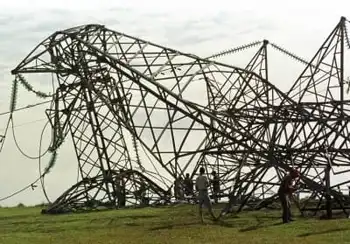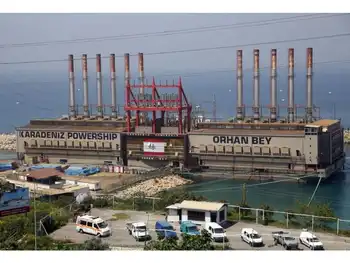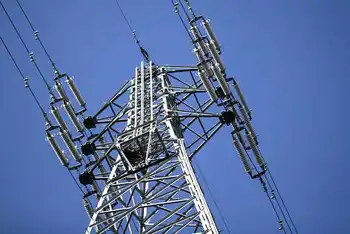OTTAWA -- - Candu operators in blackout probe
OTTAWA -- Ontario's nuclear power operators face tough questioning from federal safety regulators here today about why most of their Candu reactors failed to successfully weather the August 14 electricity blackout.=
The probe by the Canadian Nuclear Safety Commission marks the first official inquiry to be held in public into the massive Aug. 14 blackout that left millions in the United States and Ontario without power. A Canada-U.S. blackout task force has been gathering information behind closed doors.
A nuclear commission staff report prepared for today's meeting suggests Ontario Power Generation will likely bear the brunt of the questioning. Of the seven OPG reactors at the Pickering and Darlington stations delivering power at the time of the blackout, only one avoided being shut down completely, the report says.
By contrast, operators at the Bruce nuclear station managed to hold three of their four reactors in a standby mode and began feeding power back into the provincial grid within hours.
The report also makes clear the blackout caused more serious equipment breakdowns at Pickering than OPG officials acknowledged in a "technical briefing" held a week after the grid collapse. At the time, Premier Ernie Eves complained to senior OPG officials that he wasn't getting complete information.
The Pickering breakdowns include:
The chief protection against a dangerous core meltdown for all Pickering reactors was knocked out of commission for more than five hours.
Two reactors in the newer Pickering-B plant were hit by what the federal safety watchdog calls "a serious process failure" in the primary heavy water cooling system, only the second such incident in the station's 20-year operating history.
Operation of a backup cooling system was delayed for hours because the controls on some crucial pumps were out of whack.
Only one of Darlington's four reactors experienced equipment problems, according to the nuclear commission report. Two others were shut down because the control room supervisor didn't have time to run through the necessary safety checks. The fourth reactor was put in standby mode, like the three Bruce units, and began delivering electricity to the grid within hours.
Confirming the Pickering problems after the federal safety report was released, OPG officials insisted safety was never compromised at the nuclear power station.
Federal officials and independent nuclear experts say the most troubling equipment failure was the loss of Pickering's crucial Emergency Coolant Injection system for 5 1/2 hours. The system is designed to flood the reactor with ordinary water if there is a disruption in the flow of heavy water that normally cools the fuel.
Pickering's emergency coolant injection was knocked out because the station didn't have enough standby electrical generating capacity to restart the system's high-pressure pumps idled by the blackout. Both Darlington and Bruce nuclear power stations have such heavy-duty generators, according to federal nuclear safety officials.
The bigger generators were left out as an economy measure when the newer half of the Pickering station was built 30 years ago.
"We always had the capacity to cool the fuel," said Cedric Jobe, OPG's vice-president of nuclear regulatory affairs. Jobe and OPG spokesperson John Earl said secondary emergency cooling methods could have been used if there had been any disruption of the main heavy water cooling at Pickering.
Eves said last night he is confident that both OPG and Bruce Power acted responsibly in taking several days to restart nuclear reactors after the lights went out on Aug. 14.
"It's common knowledge that it takes time when a nuclear unit totally shuts, the longer it takes to bring it back and the older the unit, the more difficult those challenges are," he said.
Eves said his government's own internal review of the province's response to the blackout concluded that all systems performed properly.
Related News

New Power Grid “Report Card” Reveal Dangerous Vulnerabilities
WASHINGTON - The U.S. power grid just received its “grade card” from the American Society of Civil Engineers (ASCE) and it barely passed.
The overall rating of our antiquated electrical system was a D+. Major power outages in the United States have grown from 76 in 2007 to 307 in 2011, according to the latest available statistics. The major outage figures do not take into account all of the smaller outages which routinely occur due to seasonal storms.
The American Society of Civil Engineers power grid grade card rating means the energy infrastructure is in “poor to fair condition and mostly below…




